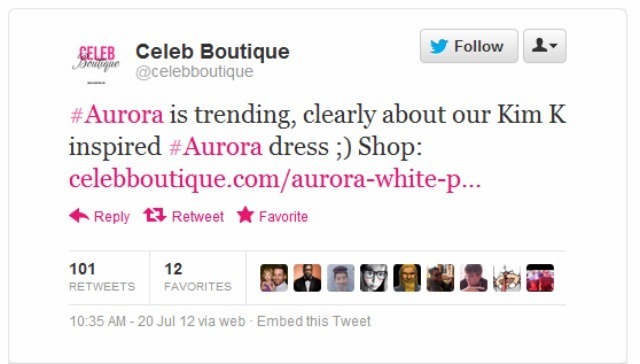I’m not a marketer.
Not just because I’m too cool to consider myself a marketer, but because I’m so terrible at it that calling me a marketer does a disservice to all the people who actually studied marketing and do a great job of it professionally. I respect marketers, love a lot of the work that they do and the creativity and zeal they bring to their projects. I just don’t know how to do that.
I’m a maker. I make stuff. And it took a marketer to really get me to understand the difference between the two.
Marketing
Marketing is a practice of control. You have a message, or a brand, or a campaign, and you want to manage it with some end goal in mind. It makes a lot of sense. A lot of the marketing blogs I follow spend a lot of time talking about what to do when your message is co-opted by someone else or when someone sends a message that compromises your brand. They warn against using hashtags or jumping on trends without doing research, like this fateful tweet from the day of the Aurora shooting.
But any marketer worth their salt will also tell you that marketing is about more than being your brand all the time. It’s also about knowing when not to be. When to be a person and exhibit human concerns, when to engage with your audience rather than just blasting out a message as loud as possible. I’m sure I’m missing a lot of the subtleties of it too, and I’d love to learn more. I think it’s less about direct control than it used to be. Social media has democratized promotion, in a way. Everyone is a kind of brand when they start posting online. The web is rife with examples of people handling that poorly, and the rest of us have had to learn a thing or two about marketing, which has only made marketers more savvy. Now they don’t just maintain control, they educate people on control and what to do when things get out of control.
Making
Making is just about making great stuff. Writers are makers. Blacksmiths are makers. Hackers are makers. Musicians are makers. They make stuff and they just send it out into the world. I won’t pretend that they don’t care about it, but they don’t really care about controlling it. Places like Thingiverse.com are full of patterns people have designed and just released, and musicians like Kevin MacLeod make incredible music and give it away. The joy isn’t in managing all this content, but in making it and making it as awesome as possible. In a way, the loss of control is part of the appeal. Once it’s out there, people either use it or they don’t. They view it or they don’t. And when they do, that’s when you celebrate. From what I understand even professionals, authors and musicians for example, get this warm feeling when they see their work being studied in a class or watch fans make derivative pieces. Their work is changing people, and that’s what matters.
I don’t think these views are really in opposition, and they only really overlap when it comes to the making of things. When is advertising art and when is art advertising, for instance? Dan talks a lot about the gulf between being great at making art and being great at selling it (and I think it’s a touch unfair to equate marketing with selling). There are lots of people who are both, but it’s a tough row to hoe.
I certainly wouldn’t argue that one mentality is better than the other. They’re useful for different things, and I think as time goes on they’re wandering closer together. Marketers are trying to create organic content that people will play with and makers are trying to get their message out in addition to their stuff. But as a maker often confused for a marketer, I think about the two ways of thinking a lot and how much I have to learn about both of them. Just a thing I’ve been mulling over. next week, actual philosophy. Maybe even some logic!
If you’re a maker or a marketer or some jumble of the two, how do you get by, and what important lessons have you learned from one side or the other? Leave a comment and let me know, or straighten me out on the particulars.


“Basketball has always resonated with the Chinese population,” Ho told Jing Daily. “Huge star power and American culture, combined with a great respect for hard work and dedication, perpetuated the Chinese love of basketball and propelled Air Jordans into a status symbol of mass fashion, not just for this The admiration of the sport, but embodies all the star power, style, and charisma of the players.” Harnessing the power of celebrity, finally, the collaboration has big names in its corners. High-profile stars such as Daniel Arsham, Ashanti, and Kylie Jenner were among the first to get their hands on the shoe, releasing information about the shoe ahead of its official launch. Also in China, Air Dior was boosted by Chinese brand ambassador Wang Junkai, who rocked the entire capsule from head to toe in a video that has been viewed more than 16 million times. E-sports player Jackey Love, business tycoon Wang Sicong and fashion icons Jay Chou and Edison Chen are also showcasing the merchandise, touting their aspirations.